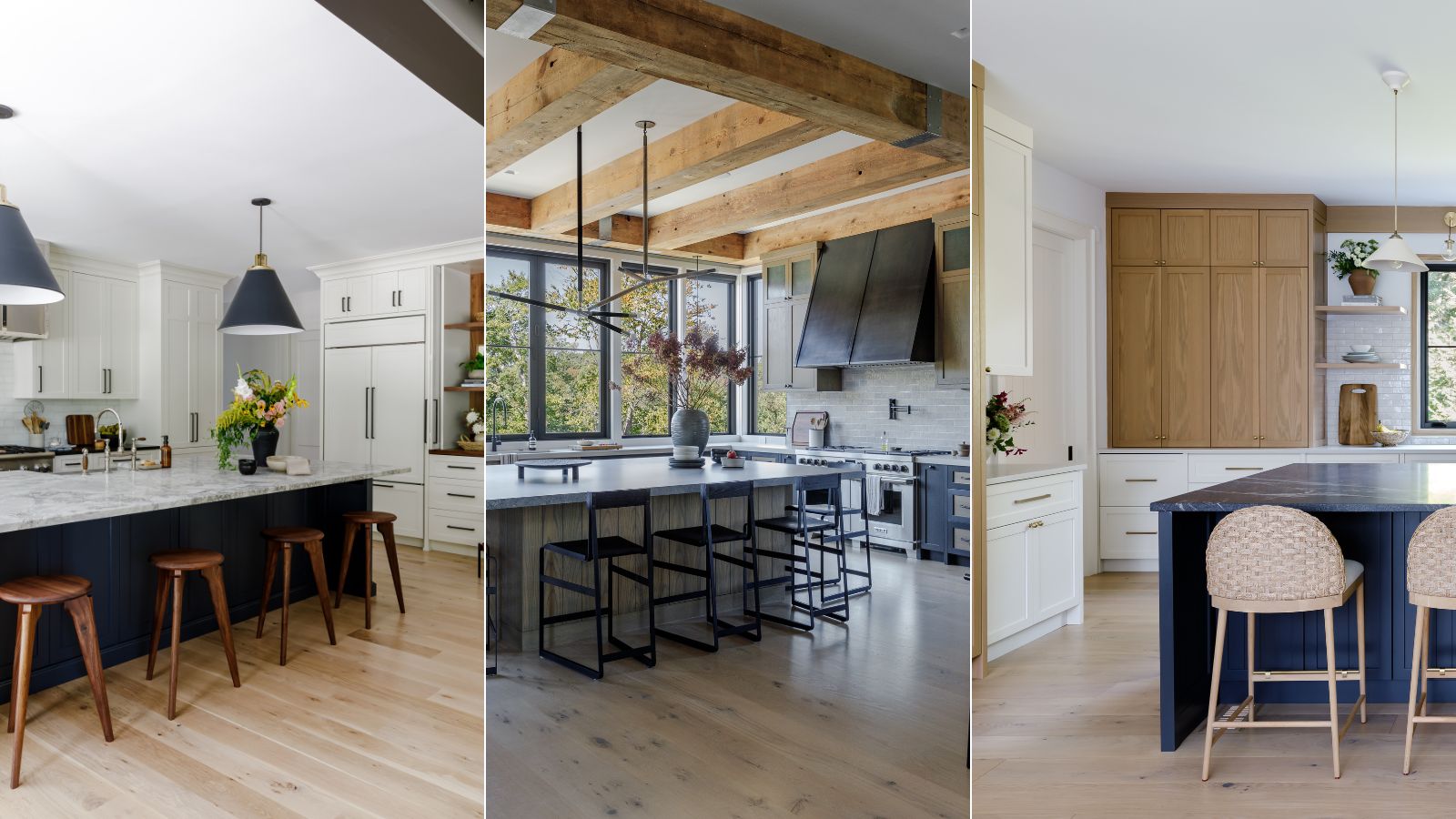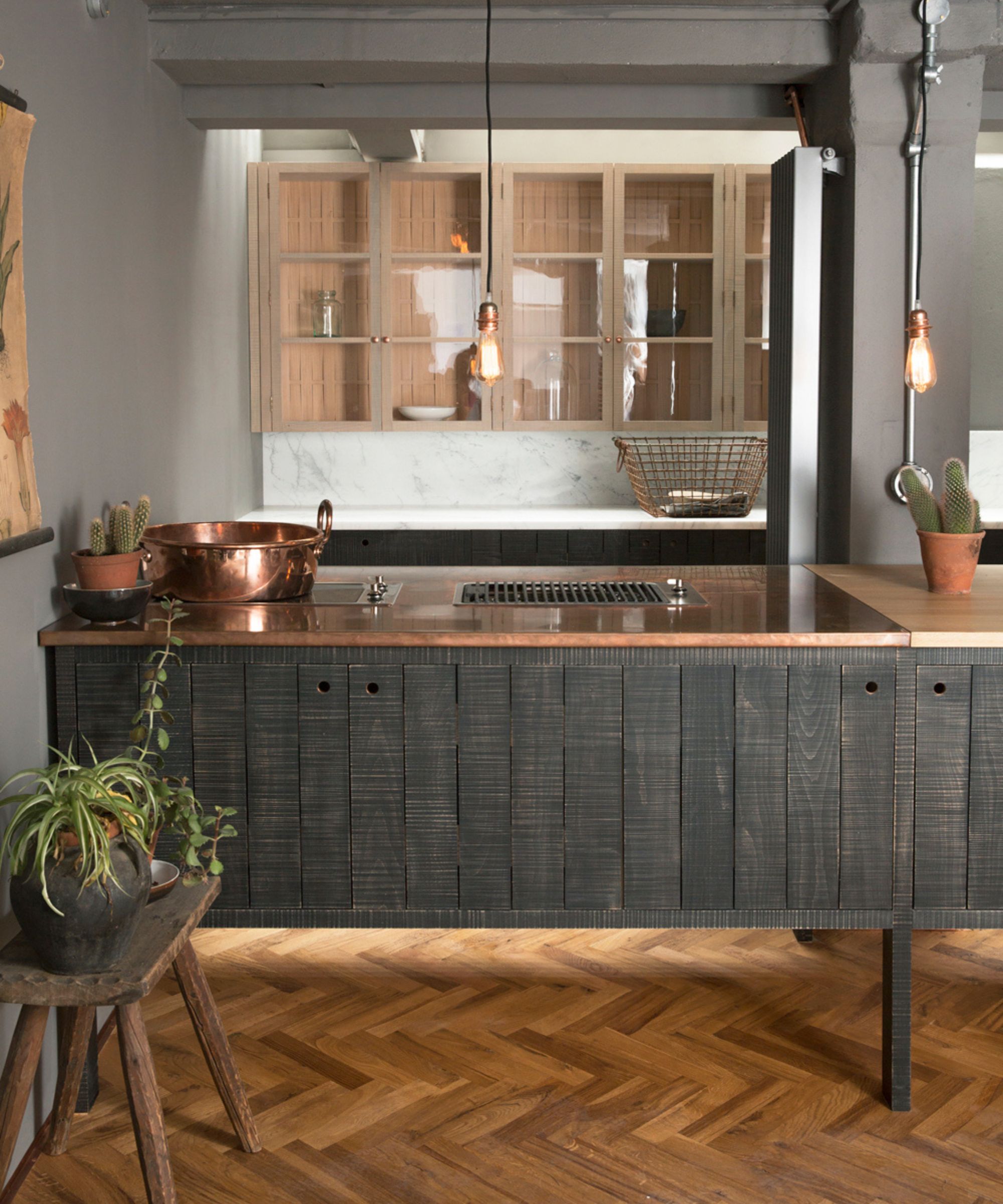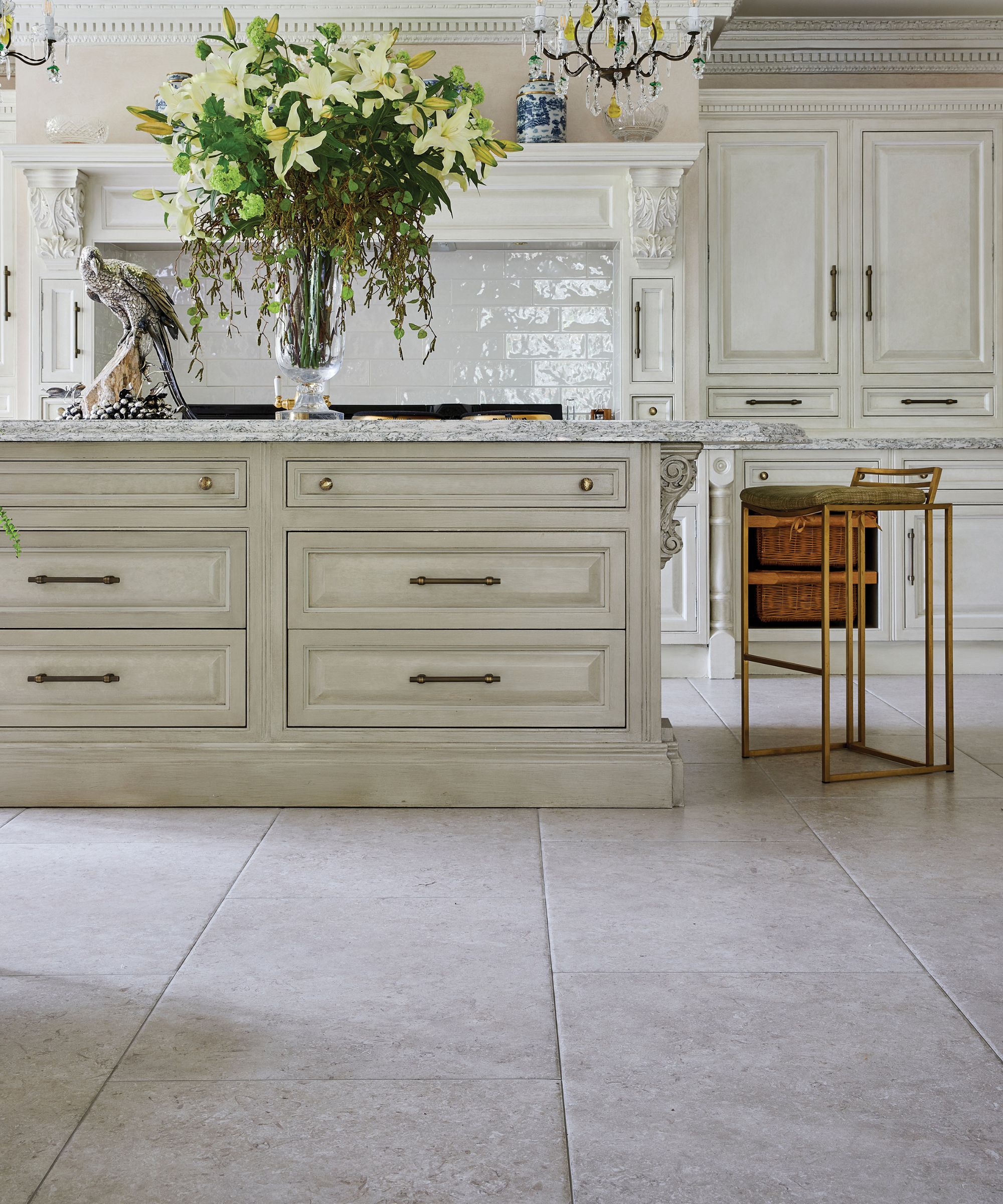Is wood or tile flooring best for a kitchen? Interior designers decide which material comes out top (the answer might surprise you)
It's all about warmth, texture, and enduring appeal


Choosing the right kitchen flooring is key to not only how your space looks, but how practical it is, too. The wooden vs tile kitchen flooring debate is one we all experience when designing our schemes, but which option is better?
Kitchen flooring ideas come in many colors, patterns, and designs, but they are almost always wooden or tiled. While they are both excellent choices visually and functionally, is there one that reigns supreme over the other?
To find out once and for all the best material, we've taken the wooden vs tile kitchen flooring debate to interior designers, who have weighed in on their favorites. And perhaps surprisingly, one has easily come out on top.
Should you choose wooden or tile kitchen flooring?

No rule book says one is right and one is wrong, but wooden and tile kitchen flooring offers two different looks in a scheme, creating contrasting styles. And as this year's kitchen trends champion warmer, lived-in style, wooden seems to be the flooring of choice.
'In kitchens, I lean toward wood flooring for its warmth and ability to seamlessly connect spaces. I only recommend opting for harder, more durable wood types like white oak or walnut. Softer woods could leave you needing to refinish them after a few stools are dragged or high heels are worn getting ready for a night out,' says interior designer Becky Shea.
There are plenty of ways to customize wooden flooring to work in your kitchen scheme, from how it's laid to the tone you choose. 'White oak is especially versatile, offering a strong grain that adds character while being resilient to daily wear and tear. It's also very true to the stain color you select due to its natural neutrality, though make sure to sample stains onsite before confirming,' she adds.

You might consider tile the obvious choice if you want to introduce any type of pattern to your kitchen floor, but there's a design that's become favorable with wood floors that really elevates a scheme.
Design expertise in your inbox – from inspiring decorating ideas and beautiful celebrity homes to practical gardening advice and shopping round-ups.
'Herringbone-style flooring is gaining popularity in kitchens due to its sophisticated design and practical benefits. Despite being a classic pattern, it has recently become a highly sought-after choice once again,' says Neel Bradham, CEO at Parador.
'This timeless style seems to have been rediscovered and is now making a statement in modern homes, seamlessly blending old-world charm with contemporary design,' he adds, making it a perfect choice for kitchens ideas that are more traditional, transitional, or modern.

Even though wooden flooring is proving a favorite among interior designers and homeowners alike, there is still a place for tile kitchen flooring. It's all about choosing the right material and color that doesn't make your space feel cold.
'However, if you prefer tile or are thinking about an outdoor kitchen, for instance, large-format porcelain or natural stone tiles are excellent choices. Porcelain is highly durable and requires little maintenance, making it perfect for busy (or outdoor) kitchens. I recommend a tile size of 12x24 or larger, as this not only creates a modern, seamless look but also minimizes grout lines, which makes cleaning easier,' says Becky.
Alternatively, for a more cozy or rustic kitchen theme, there are some truly timeless options, both wooden and tile. 'If you're drawn to a more rustic or organic look, reclaimed wood can also be a beautiful, sustainable option that brings in a rich patina with age. If you love texture and warmth, natural stone tiles like limestone or travertine can offer a timeless and organic feel, especially in neutral tones,' she adds.

Sometimes, though, tile is the most practical option, even if a wooden floor might offer a better aesthetic, particularly in outdoor kitchens or kitchens that experience more water exposure than usual. In these cases, you have to get creative with your tile choices.
'I've also used a porcelain tile inside a pool house kitchen that mimics that of natural wood flooring, which struck the right balance between aesthetics in the design and functionality for our clients,' Becky explains.
Functionality should always be the first consideration, but where it's suitable (aka not an outdoor or pool house kitchen) wooden kitchen flooring is a favorite for adding warmth, texture, and homey appeal to a scheme.
If you're currently deciding on wooden vs tile kitchen flooring, interior designers prefer the former thanks to its durability and aesthetic appeal. And while there will always be a place for tile flooring – especially if you love patterned period-inspired designs – the versatility of wood is reigning supreme.

I’ve worked in the interiors magazine industry for the past five years and joined Homes & Gardens at the beginning of 2024 as the Kitchens & Bathrooms editor. While I love every part of interior design, kitchens and bathrooms are some of the most exciting to design, conceptualize, and write about. There are so many trends, materials, colors, and playful decor elements to explore and experiment with.